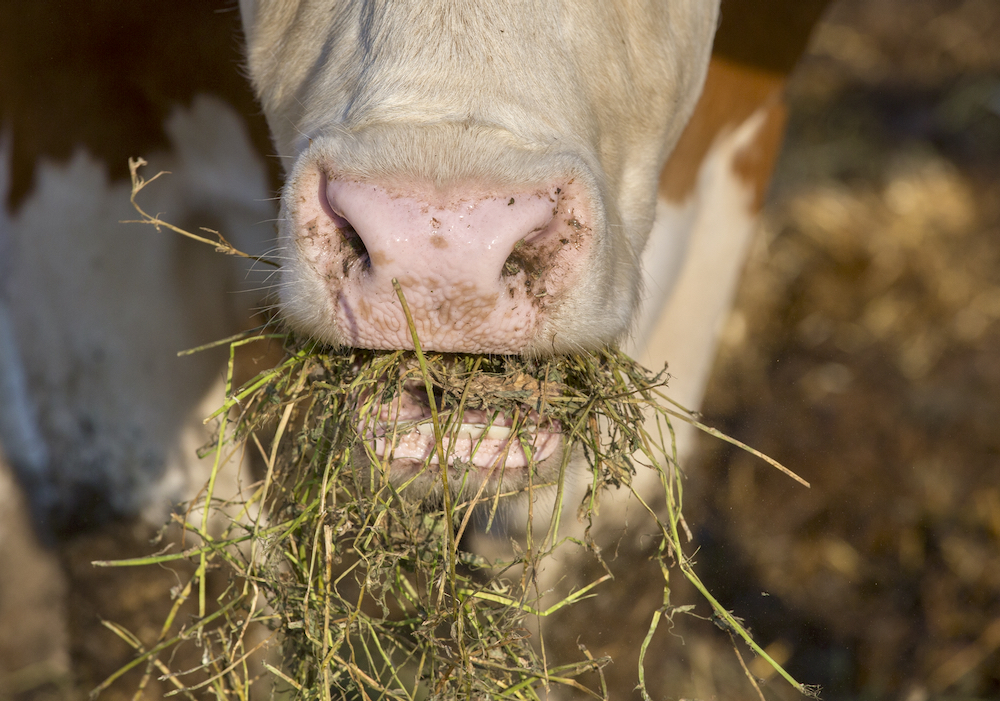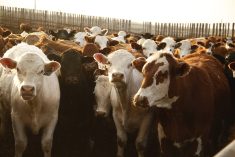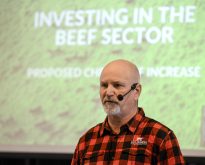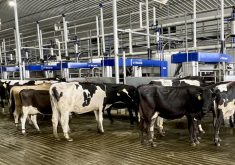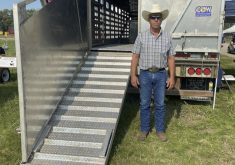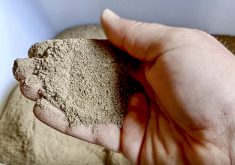As feed prices climb, livestock producers need to maximize every ounce of their rations for higher efficiency and nutritional results.
While each livestock sector may have its specific needs, a hot topic at the Grey Bruce Farmers’ Week (GBFW) last month was the overarching feed-saving tips to help reduce costs while optimizing gain.
Why it matters: Corn, a staple feed source, saw a 26 per cent increase in costs in 2021 over 2020 in Ontario after reaching more than $300 per tonne in August and September, leaving producers feeling the pocket-book pinch.
Read Also
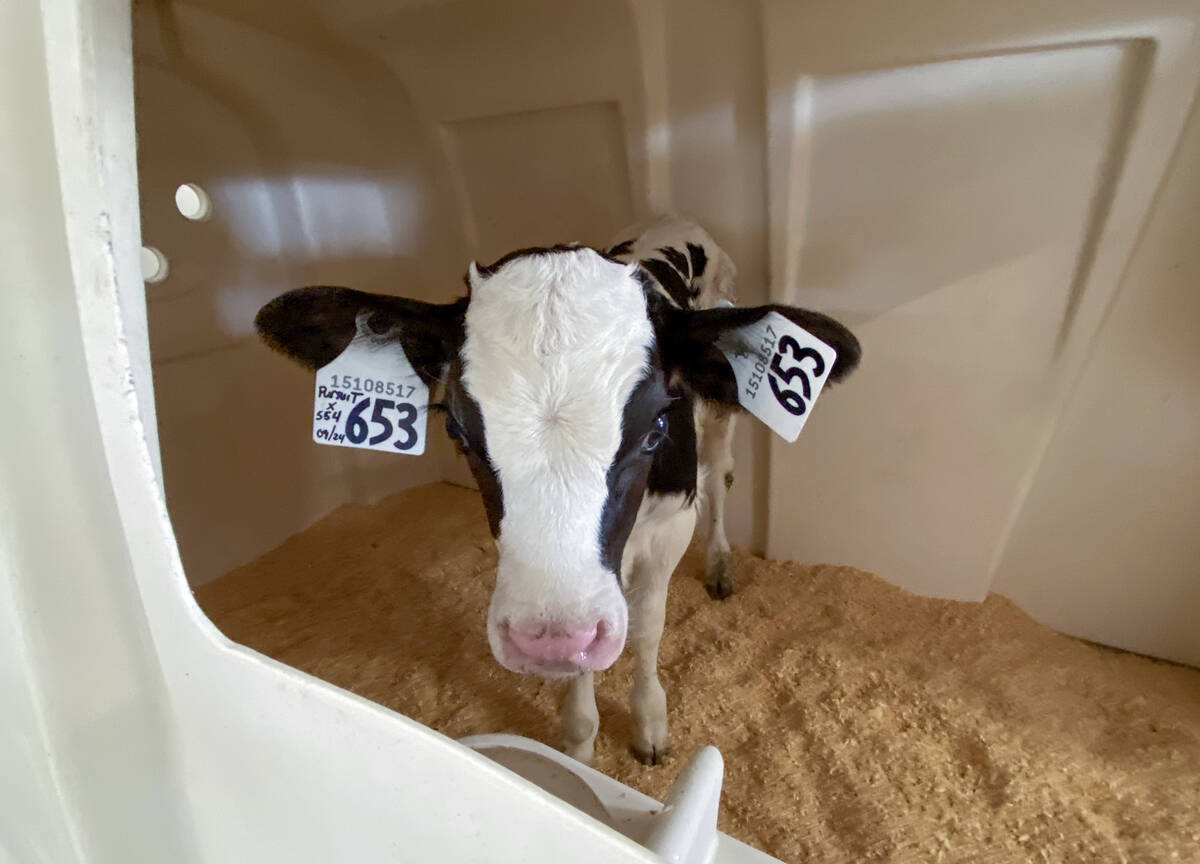
Lactanet turns methane expertise into business opportunity
Lactanet’s new fee-for-service breeding tool initiative to reduce greenhouse gas emissions in Canadian and Swiss Holstein herds will launch in April 2026.
Courtney Vriens, owner and nutritionist at Vriens Nutrition Consulting, said quality levels in forage play a critical part in balancing the rations and the ledger when it comes to cost per animal per day.
Testing forage and utilizing the feed analysis to craft an accurate nutritional plan for livestock based on their production stage helps define when higher quality feed saves money and when lower quality forages provide sufficient nutrition.
Dr. Katie Wood, an associate professor with the University of Guelph, said during GBFW Beef Day that to get an accurate nutrient profile, producers should have samples from 15 to 20 bales of hay stored in Ziploc bags for testing. However, wet feed should be frozen solid then shipped overnight to the lab to retain freshness.
Knowing the moisture content in the feed is essential, she said. While hay is generally close to 90 per cent dry matter, the moisture content of silage can influence the amount of protein, carbohydrate-based energy, fibre and sugars available.
“Some of these (silage) components can cause toxicity,” said Wood. “For annual forages particularly, it might be a good idea to measure nitrates because, for a few extra dollars, it’s worth it for ease of mind … making sure we’re avoiding some of those trouble areas.”
Knowing hay and silage values leads to a more accurate cost-nutrient evaluation of rations and confirms whether the nutrient plan is effective and financially efficient.
During the GBFW Sheep Day, Vriens showed an example of two rations with equal protein levels that utilized whole corn and SC VNC sheep plus Px ration but differed in hay quality. The high-quality hay ration costs 55 cents per head per day, six cents cheaper than the less expensive low-quality hay that needed a soybean meal supplement to meet the exact protein requirements.
“By sampling our forages and knowing the quality, we can make better decisions about formulating cost-effective rations,” said Vriens.
Ideally, producers should work with a nutritionist who can provide resources to help make sense of the acronyms, numbers, total nutrient value of the forage and optimize the producer’s feed investment.
“Select the right commodity,” advised Vrien. “We want to determine where and when it might make sense to utilize something like soybean meal compared to corn distillers, or corn to corn distillers.”
Fluctuating commodity prices will play a part, but knowing how a supplemental value fits into the ration and impacts the bottom line facilitates growth increases while keeping feed costs low.
University of Guelph research professor Dr. Paul Luimes said producers need to know where their money is spent.
“For every lamb that goes to market, you’re also paying to feed the ewe that produced that lamb,” he said. “So understand the big costs.”
Creep feed can be costly, said Luimes, so when his lambs reach half a pound of creep a day, he switches them to their finishing diet.
“There’s no sense keeping them on creep for very long if I can bring that cost down a lot lower,” he said, adding research from the University of Guelph showed feed-to-gain ratios improve as the lambs grow faster.
“Don’t think you can save money by slowing them down,” Luimes said. “You can’t starve a profit, so the quicker you get them to grow, the more efficient their growth is going to be.”
He added that the faster the lambs reach marketability, the sooner they’re off the books, and farmers aren’t feeding a maintenance cost over a long time.
Another study based on beef cattle data revealed producers can feed 100 per cent grain to market lambs with some free choice hay, resulting in excellent growth rates.
“If you have replacement ewes, you want more forages in there and probably only put 30 per cent starch, in that case, to make sure you don’t overfeed them,” he said.
Luimes has been experimenting with a repurposed sow feeder and electronic tags for the last six years to create individualized feeding rations for his flock dependent on their growth, gestational and production stages.
“I’ve found that since I’ve done that, my body condition scores are a lot more consistent,” he said. “If I have triplets, I feed more; if I have singles, I feed less. And my feed costs have dropped dramatically because I don’t have to feed to that 75th percentile to maintain condition on those lighter ewes.”
The breed can also play a part, said Vriens, suggesting that in a mixed herd of Dorset and Rideau, the one who utilizes feed more efficiently will end up overfed, making sorting a simple way to save feed costs.
Charlie Cunningham, owner of Merry Meadows farm and sheep shearer, said they utilize all the existing assets on the farm, especially when it comes to grazing unharvestable acres, cover crops or bale grazing in the winter months.
“If you have acres available, grow your own feed. Grazing saves money on infrastructure, which is a big thing nowadays – everybody wants a barn,” Cunningham said. “It’s not for everybody, neither is grazing, but it does save money.”
Marry Meadows grows Sudan grass, oats, peas, haylage, corn silage, and cob meals, and because they couldn’t get a cover on the bunker, they scrapped seed from the shed and threw it on to, growing about six inches for the sheep to graze.
“Every time the gate gets open, guess where the ewes and the feeder lambs are? Up there on that corn pile. We’re definitely grazing every possible acre here,” he said with a laugh.
He also shops around for his commodities to find the best price noting that a $20, $40 or $50 difference per tonne can save $500, $1,000 or $2,000 a load.
Cunningham is a stringent sorter when he feeds. He sorts for life stage, size, market readiness, and even parasites. As a shearer, Cunningham constantly sees evidence of parasites and said, “If you’re feeding sheep full of parasites, you’re feeding those parasites, you’re not feeding that sheep very much.”
Sorting lambs and feeding to need or getting them doctored up are cost-effective measures that save money.
If producers consider feeding for need, whether that’s body condition, breed efficiency, life stage or market, each aspect provides an opportunity to impact the producer’s bottom line and the animal’s top production.




